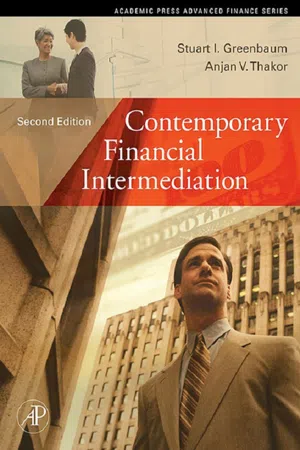The Conversation: 1991
The three friends are Alex Appleton, Beth Butterworth and Mike, the moderator. The time is early 1991 and the three friends are engaged in an animated debate about the recently publicized financial crises in the savings and loan (S&L) and banking industries.
Moderator: So, what do you people think? Will we ever really understand what happened to the American banking industry well enough to know what should be done?
Appleton: Well, I think banks and S&Ls were simply victims of the environment. We had an inverted yield curve—long rates were lower than short rates—for a while and this made it difficult for financial institutions to reap their normal profits from asset transformation; you know, I’ve never believed in the expectations hypothesis. It’s a theoretical nicety with no practical relevance. Of course, the increased interest rate volatility didn’t help. As if this weren’t enough, there was an enormous increase in competition, both domestic and international. These institutions must have felt like they were being squeezed by a powerful vise.
Moderator: And let’s not forget those myopic politicians who encouraged banks to take on significant LDC (loans to developing countries) exposure. Do you know how much bank capital was wiped out as a result of LDC writeoffs? It sure puts the European banks at a competitive advantage. Also, all of the deregulation and reducing capital requirements didn’t help either. By the way, Alex, I’ll give you another reason not to like the expectations hypothesis—it’s also wrong.
Appleton: I didn’t know that. Are you sure? In any case, it’s good to know you agree with me, Mike. But frankly, I’m surprised. Knowing how you and Beth feel about this, I thought I’d get more of an argument.
Moderator: Well, cheer up, Alex. My agreement with you is only partial. I agree that depository financial institutions faced a tough environment during the last 15 years or so. But I also think they could have managed their risks more intelligently. For example, they could have reduced the duration gaps in their asset and liability portfolios and made use of contemporary immunization techniques to hedge their interest rate risks. Like some of the investment banking houses, they could have been more innovative in brokerage activities, so that the resulting fee income would have made banks less dependent on the riskier asset transformation activities. Just look at the profits earned by some investment bankers who stripped Treasuries and sold zeros (pure discount bonds) like CATS (Certificates of Accrual on treasury Securities) and TIGRS (Treasury Investment Growth Receipts). No, Alex! The real story runs much deeper than your “passive victims of the environment” explanation. I think banks and S&Ls exploited the system and ripped off taxpayers.
Appleton: Mike, you’re paranoid.
Moderator: Am I really? More than 50 percent of the S&L failures involved management fraud.
Butterworth: It’s kind of amusing to listen to both of you, because neither of you is completely right. Mike, even though fraud was detected in more than 50 percent of failed S&Ls, I believe that the dollar losses due to fraud added up to less than 5 percent of the total dollar losses. So the fraud issue is a bit of a smokescreen. I think the real problem is that we designed a banking system in the 1930s and it’s outdated.
Moderator: I don’t see where you’re disagreeing with me, Beth. After all, isn’t it tautological to say that a system that allows itself to be exploited by depository institutions is outdated?
Butterworth: Not quite! My point is not that the system allowed itself to be exploited. Rather, the system encouraged depository institutions to do the things that they did. By and large, I don’t believe that banks and S&Ls did many things that were not in the interests of their shareholders. Rather than being the victim of exploitation by banks and S&Ls, the system provided the incentives for these institutions to engage in the activities you have termed “exploitation.” There’s a difference between crying foul because a thief breaks into your house while you’re away and crying foul after you have invited the thief into your house to carry away your possessions.
Moderator: We may be getting bogged down in semantics here. Could you be more specific, Beth?
Butterworth: Well, I’m referring to the distorted risk-taking and capital accumulation incentives provided by our system of governmental regulation. Risk-insensitive deposit insurance pricing gave endowed banks and S&Ls low-cost put options and created a monstrous moral hazard problem. Regulatory uncertainties artificially pushed up the cost of bank capital and, combined with declining charter values, really exacerbated the moral hazard problem. What we ended up with was a system totally lacking in any sort of incentive compatibility.
Appleton: Beth, most of what you are saying is totally incomprehensible to me. Didn’t you tell me the other day that you thought that implementing a risk-sensitive deposit insurance pricing scheme could be a real nightmare? So, why pick on the risk insensitivity of deposit insurance pricing as the culprit?
Butterworth: I still strongly believe what I said then, Alex. But that doesn’t contradict what I’m saying now. It’s kind of tricky to explain this, but…
Moderator: Excuse me, Beth, but I have to leave in a little while, so perhaps we can move on and talk about what can be ...
